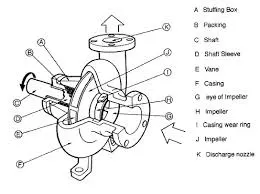Mobile:+86-311-808-126-83
Email:info@ydcastings.com
English
vortex casing in centrifugal pump
Vortex Casing in Centrifugal Pumps An Overview
Centrifugal pumps are widely used in various industrial applications due to their efficiency and capacity to handle large volumes of fluid. Among the numerous designs and configurations available, the vortex casing has gained significant attention for its unique capabilities. Understanding the function and advantages of vortex casing in centrifugal pumps can provide valuable insights into optimizing pump performance.
What is Vortex Casing?
Vortex casing refers to a specific design of the pump casing that harnesses the centrifugal force generated by the impeller to create a vortex effect within the pump. Unlike traditional pump designs that rely on direct liquid flow along a conventional path, vortex casings utilize the rotational movement of the fluid to enhance the pumping action. This is achieved by creating a spiral or helical flow pattern that allows for more efficient energy transfer from the impeller to the fluid.
Advantages of Vortex Casing
1. Improved Efficiency One of the primary benefits of vortex casing is its ability to improve hydraulic efficiency. By effectively managing the flow of fluid, these casings reduce turbulence and energy losses. The controlled vortex flow minimizes recirculation zones, leading to more efficient energy conversion from mechanical to hydraulic energy.
2. Solids Handling Capability Vortex pumps are particularly advantageous in applications where the pumped fluid contains solids or suspended particles. The unique flow path in a vortex casing prevents clogging, as the design minimizes areas where particles can accumulate. This feature makes vortex pumps ideal for wastewater treatment, mining, and agricultural applications, where solids content can vary widely.
vortex casing in centrifugal pump

3. Reduced Cavitation Risk Cavitation, a damaging phenomenon that occurs when vapor bubbles form and collapse within the pump, can significantly diminish performance and lead to equipment failure. The vortex design helps to alleviate cavitation risk by ensuring that pressure levels within the pump casing remain above the vapor pressure of the fluid being pumped. This is crucial in maintaining the longevity and reliability of the pump.
4. Versatility Vortex casing pumps are adaptable to a wide range of applications. Their ability to handle different types of fluids, including viscous and shear-sensitive liquids, enhances their usefulness across various industries. They can efficiently pump fluids with varying physical properties, making them suitable for everything from chemical processing to food and beverage industries.
Applications of Vortex Casing Pumps
Vortex casing pumps are employed in various sectors due to their superior performance characteristics. In wastewater treatment facilities, they are essential for transporting effluent that may contain solid particles. In agriculture, these pumps irrigate fields with bio-solids and manure. Furthermore, industries dealing with slurries often rely on vortex pumps for effective fluid management, ensuring efficient transfer and minimal maintenance.
Conclusion
In conclusion, vortex casing in centrifugal pumps represents an innovative approach to fluid transport that enhances efficiency and reliability across multiple industries. The design not only optimizes energy transfer but also improves the handling of solids and reduces the risk of cavitation. As industries continue to seek efficient and durable pumping solutions, vortex casing technology will likely play an increasingly vital role in achieving these goals. Understanding the benefits and applications of vortex casing can pave the way for advancements in pumping technology, ultimately contributing to process efficiency and productivity.
-
Materials Used in Manufacturing Cap End Pipe FittingsNewsNov.24,2025
-
Material Properties of CF8M CastingNewsNov.24,2025
-
How to Inspect Pump Cap Ends for DamageNewsNov.21,2025
-
Backward Curved Impeller – Efficient Airflow Solutions for Industry | YD CastingsNewsNov.21,2025
-
Automobile Water Pump - Efficient, Quiet, Durable & ElectricNewsNov.21,2025
-
Impeller for Pumps – High-Efficiency, Durable, OEM-ReadyNewsNov.21,2025











